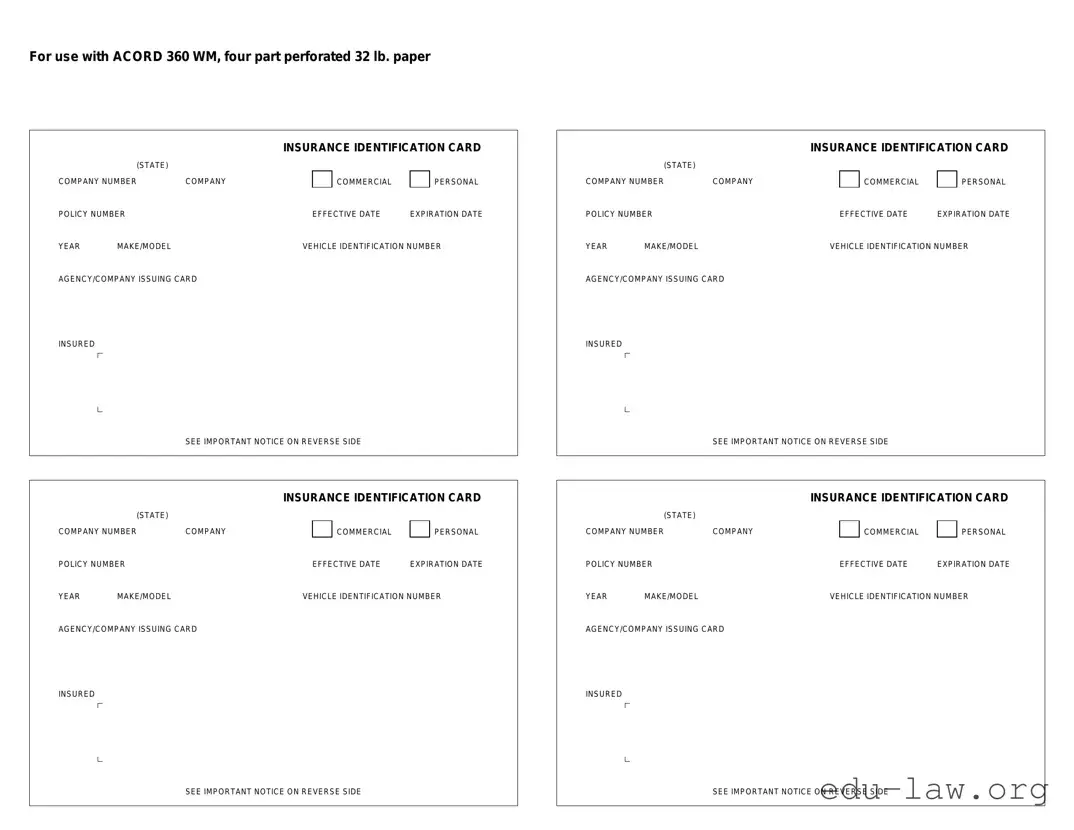The Acord 50 WM form, typically used for workers' compensation insurance, shares similarities with the Acord 25 form. The Acord 25 is the standard property and casualty insurance application. Both forms gather essential information about the applicant, such as business details and coverage needs. Completing either form requires meticulous attention to detail to ensure that the insurer accurately assesses risk and provides adequate coverage. This emphasis on comprehensive information underscores the significance of both documents in the underwriting process.
Another document akin to the Acord 50 WM is the Acord 130. This form is dedicated to auto insurance applications and collects pertinent data regarding vehicles and drivers. In the same vein as the Acord 50 WM, the Acord 130 is designed to ensure that underwriters have a complete picture of the risks involved. The clear layout and structured queries facilitate an efficient application process, helping applicants navigate the complexities of securing appropriate insurance coverage.
The Acord 27 form is comparable as well. It serves as an application for commercial property insurance. Just like the Acord 50 WM, it emphasizes detailed property information, including location, occupancy, and value. This focus assists insurers in accurately evaluating potential risks. The precision required in both forms exemplifies the need for thorough information to determine suitable coverage levels, ensuring businesses are adequately protected.
Another document worth mentioning is the Acord 125 form, which is designed for general liability applications. Both the Acord 50 WM and the Acord 125 aim to collect crucial data that influences an insurer’s decision. The Acord 125 captures information about the business operations, while the Acord 50 WM focuses on employee-related risks. Having complete and accurate information is vital for both insurance types, helping to ensure that businesses are shielded from unexpected liabilities.
The Acord 114 form stands out as it pertains to umbrella insurance coverage. Similar to the Acord 50 WM, it seeks to gather details about existing insurance policies and coverage limits. This is important because umbrella insurance provides additional security on top of primary policies. The goal of both forms is to give a clear view of what coverage is already in place and what additional protection may be necessary to safeguard businesses effectively.
In the realm of personal insurance, the Acord 30 form aligns closely with the Acord 50 WM in its structured approach to gathering information. Focused on personal lines, the Acord 30 collects data related to personal property and liability. Both forms ask for specifics to assess risk accurately, reinforcing the importance of clarity in the insurance process. This organizational structure aids applicants in understanding what’s required to secure the right coverage.
Additionally, the Acord 75 form is similar as it deals with contractor insurance applications. Both the Acord 50 WM and the Acord 75 require information about business operations and employee details, emphasizing the risks associated with specific industries. Completing these forms with precision helps ensure that coverage meets the unique needs of each business, providing peace of mind for those in high-risk professions.
Specific to life insurance, the Acord 801 form establishes a connection with the Acord 50 WM through its intent to gather information for underwriting purposes. Both forms serve the vital function of helping insurers understand the respective risks, either to employees or to individuals. Properly completing the Acord 801 ensures that applicants disclose essential personal information relevant to their coverage needs, similar to the way the Acord 50 WM outlines risks associated with workers’ compensation.
Lastly, the Acord 20 form, dedicated to commercial auto insurance, also bears a resemblance to the Acord 50 WM. Both forms gather critical operational information to aid in determining insurance needs. They require detailed descriptions of assets and operations to accurately assess potential risks. This systematic approach to collecting information reinforces the importance of thorough documentation in both worker and vehicle-related coverage to ensure that all potential liabilities are covered.


